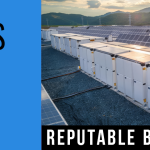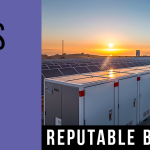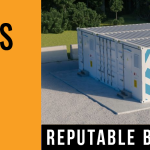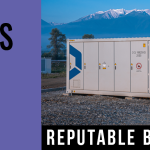 Characterized by diverse geographic regions and climate zones, cities, towns and villages in Chile often are separated by difficult terrain and long distances, Sitting atop one of two colliding tectonic plates – the oceanic Nazca and continental South American – the Andean nation, as has come to be known worldwide, is also prone to cataclysmic earthquakes.
Characterized by diverse geographic regions and climate zones, cities, towns and villages in Chile often are separated by difficult terrain and long distances, Sitting atop one of two colliding tectonic plates – the oceanic Nazca and continental South American – the Andean nation, as has come to be known worldwide, is also prone to cataclysmic earthquakes.
Given all this, Chileans are increasingly recognizing, aand taking advantage of, the prospective benefits held out by renewable microgrids, including those in which solar-plus-storage are core elements. Italy’s Enel Green Power numbers among the players participating in Chile’s emerging “green energy” revolution.
On May 31, the Rome-based multinational clean energy services company announced its Enel Green Power Chile subsidiary had commissioned “the world’s first 100% emissions-free ‘plug-and-play commercial-sized microgrid.” Relying on a combination of a 125kWp (kiowatt-peak) solar photovoltaic (PV) power generation and 580-kilowatt-hours (kWh) of lithium-ion battery (LiB) (132-kWh) and hydrogen energy storage (450-kWh), the all renewable microgrid is supplying part of the electricity needs of Enel’s Cerro Pabellón geothermal power plant in Chile’s northern Antofagasta region 24×7, management highlights in a news release.
More than 600 technicians work at Enel Green Power’s Cerro Pabellón geothermal plant in the are of Ollagüe in northern Chile’s Antofagasta region. The province of Antofagasta borders the 1,000 kilometer (625 mi) long Atacama Plateau, the driest non-polar desert in the world, the Sahara being no exception.
The Antofagasta region is also home to the vast bulk of Chile’s copper, which has long been the Andean nation’s primary export and source of foreign currency earnings. Sparsely populated, copper and other mining activities dominate the regional, as well as national, economy. Some mining companies active in the region have taken to tapping the region’s abundant solar energy resources to power their mining operations.
Enel Green Power’s Cerro Pabellón geothermal plant at a stretch could be considered mining – mining for clean energy. Tapping Antofagasta’s solar energy resources, and enhancing them with the addition of hydrogen and LiB energy storage capacity, adds to the company’s innovation and “green” energy credentials, as well as marking a world first.
Click Here to Read Full Article
read more
 CARROLL, N.H. — Energy storage technology is still moving faster than state regulators and the markets can accommodate, speakers told the 70th Annual Symposium of the New England Conference of Public Utilities Commissioners (NECPUC) on Tuesday.
CARROLL, N.H. — Energy storage technology is still moving faster than state regulators and the markets can accommodate, speakers told the 70th Annual Symposium of the New England Conference of Public Utilities Commissioners (NECPUC) on Tuesday. Hybrid systems combining the complementary aspects of more than one technology could “change the energy storage landscape”, with 2.1GW predicted for deployment in less than 10 years, according to a report from Navigant Research.
Hybrid systems combining the complementary aspects of more than one technology could “change the energy storage landscape”, with 2.1GW predicted for deployment in less than 10 years, according to a report from Navigant Research. Leading U.S. battery researchers say a
Leading U.S. battery researchers say a  Spanish wind power developer Acciona has bagged an industry award for battery storage research, amid claims the company is playing catch-up to an emerging trend.
Spanish wind power developer Acciona has bagged an industry award for battery storage research, amid claims the company is playing catch-up to an emerging trend.  The United States had its largest ever quarter for energy storage deployment this year, deploying 234 megawatt-hours worth of energy storage across the first quarter of the year, representing a more than fiftyfold growth as compared to the same quarter a year earlier.
The United States had its largest ever quarter for energy storage deployment this year, deploying 234 megawatt-hours worth of energy storage across the first quarter of the year, representing a more than fiftyfold growth as compared to the same quarter a year earlier. Described in a recent report as the “undisputed king” of the energy storage industry, California continues to blaze new trails, now with legislation to boost customer-sited energy storage.
Described in a recent report as the “undisputed king” of the energy storage industry, California continues to blaze new trails, now with legislation to boost customer-sited energy storage. Tesla (NASDAQ:
Tesla (NASDAQ:



